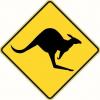Hey, I am thinking of making a couple of marking gauges. I will probably try to make an older style wedge gauge, but wanted to also make a nice hardwood-style with brass. Where do I get the brass and marking pins? Seems I can find brass inserts just fine, but I want squared or rectangular brass "rods" to use in the beam...maybe also in the fence. I want the set screw to tighten up against the brass rod, vs. the wood. Where do I find knurled brass "screws" or even thumb screws for such a project?




 Reply With Quote
Reply With Quote










